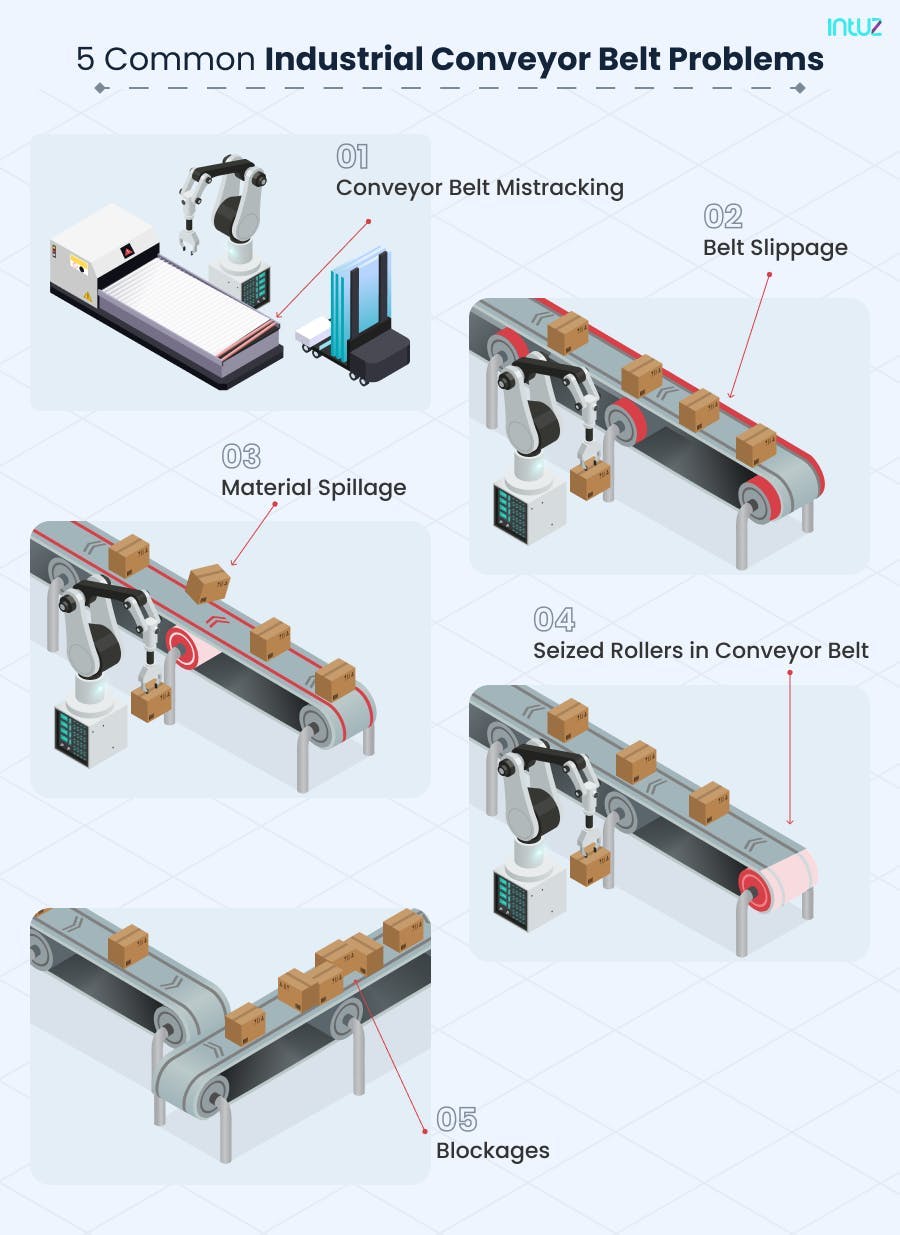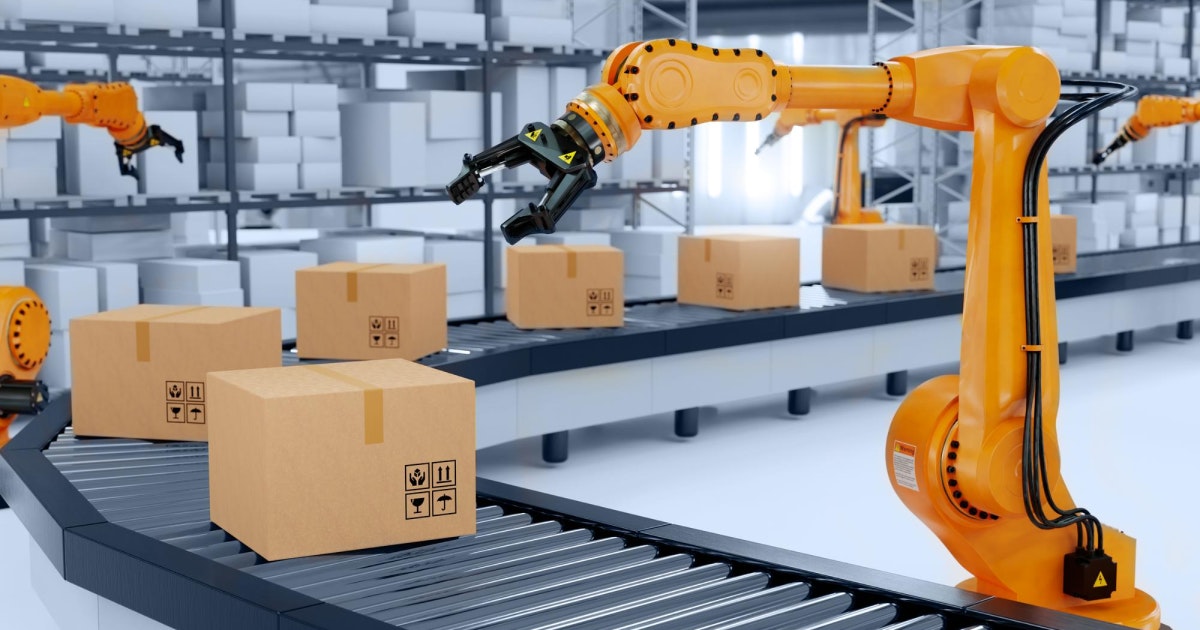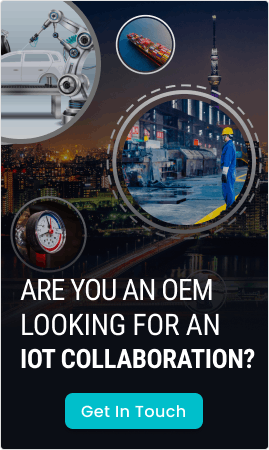Table Of Content
The invention of conveyor belts was a pivotal turning point in the industrial revolution. Whether in the automobile industry or food processing plants, conveyor belts are critical in several industries.
These engineering marvels can move heavy raw materials and products from one place to another quickly and efficiently. Conveyor belts have streamlined operations, increased productivity, and enhanced personnel safety.
Industrial Conveyor Belt Markets - The Present and Future Trends
The growing demand for efficiently handling the enormous volume of products and materials resulted in a surge in industrial automation.
According to a report, the global conveyor market size is expected to reach $12.7 billion by 2027 from a value of $9.4 billion in 2022, at a CAGR of 6%.
Moreover, it is estimated that by 2026, 50% of the market’s growth will originate from APAC (Asia-Pacific) region, with China and Japan emerging as key markets.
Customized Industrial IoT solutions. Get in touch!
Explore Now5 Common Industrial Conveyor Belt Problems that Halt Your Business’s Bottom Line
Like any mechanical equipment, conveyor belt systems are susceptible to wear, tear, and damage.
Overworked conveyor belt parts can directly impact its operation and result in your organization failing to meet its bottom line.
With several conveyor systems functioning 24*7, unplanned or emergency maintenance, repair, or replacement can cause damaged machinery, unnecessary downtime, and safety hazards.
According to the U.S. Bureau of Labor Statistics (BLS), an estimated 9000 workers get injured, and 40 workers die annually in conveyor belt accidents.

Here are five common conveyor belt problems that can influence your business’s output:
1. Conveyor Belt Mistracking
Conveyor belts must stay on their track to function flawlessly. However, conveyor systems experience belt mistracking when it gets misaligned and pulls to either side.
Some potential mistracking includes belt damage, crooked splice, and off-centered loading. There are also other signs, such as:
- A crooked conveyor frame
- Misaligned snub rollers
- Dirt and residual particles on the pulleys
Mistracking results not only in severe safety hazards but also in unforeseen downtime and even product damage. Therefore, it is important to keep an eye on small and early signs of mistracking, even if they don’t seem to cause any major damage.
Regular inspection and checking tell-tale signs of mistracking like frayed edges are vital to optimizing the performance of conveyor belts.
2. Belt Slippage
Correctly balanced tension is the key to making conveyor belts work properly. If the tension is too high or too low, things go awry, causing belt slippage.
Particularly, if the head pulley malfunctions or gets too worn out, there will be insufficient tension to keep the belt from slipping around.
Loss of tension results in unnecessary stretching and straining on the belt. It takes significant downtime to maintain and fix slippage.
Here are some of the top causes of belt slippage:
- Overloading
- Low temperature
- Poorly installed lagging
- Pulley problems
Belt slippage can adversely affect the daily operation and productivity of your business. Regular maintenance and inspection of the belts is the best way to prevent this problem and avoid future mishaps.
3. Material Spillage
Material slippage is a fairly common problem faced by a conveyor system. When a material or product accidentally slides or slips off the belt, it is called material spillage.
The spilled material leads to blockages or build-ups that create a domino effect and cause several problems in the future.
Material spillage results in immense wastage and requires innumerable man-hours in clean-ups. Moreover, it decreases the likelihood of breakdowns caused by blockages on the belt.
Leveraging Transformer Monitoring with Industrial IoT
Learn More4. Seized Rollers in Conveyor Belt
Usually, conveyor belts are constructed from metallic materials. This construction is highly durable and sturdy. However, this also means that seized-up rollers on the conveyor belt can develop sharp edges.
Apparently, sharp edges have dire repercussions throughout the conveyor system. They not only cause belt mistracking but also pose a serious threat to the personnel's well-being.
Moreover, seized rollers can cause huge damage to the goods and materials that are transported along the conveyor belt. In worst cases, the whole system can break down beyond repair, resulting in long shutdowns, resulting in heavy financial losses.
5. Blockages
The main purpose of the conveyor belts is to transport bulky raw materials and products efficiently from one place to another. If this transfer process is disrupted, the entire system collapses.
Materials often get caught, and when this happens, the next product behind it gets stuck causing a pile-up. This leads to the entire system becoming jammed and affecting production output.
While random blockages are hard to predict, it is impossible to avoid them. Therefore, it is crucial to check the belts for sharp edges, surfaces, or corners that might snag the product as they pass through.
IoT Solutions for Flawlessly Functioning Conveyor Belts
As the saying goes, “the modern problem requires modern solutions.” In this age of automation, a top-notch and technically advanced IoT solution addresses the challenges faced by conveyor belt systems.
By leveraging IoT sensors and devices, businesses can optimize operational efficiency, reduce long (and expensive) shutdowns, and enhance overall productivity.
In this section, we will explore how IoT solutions can cater to unique conveyor belt problems:
1. IoT-enabled Real-Time Alerts for Belt Slippage
Belt slippage is a common occurrence in a conveyor system that cascades into a range of issues, right from spillage to increased wear and tear.
Leveraging IoT assists businesses in machine monitoring (belt slippage) in real-time and identifying the early signs of damage.
Here are some ways in which IoT solutions help:
- IoT sensors can detect any abnormalities in speed, tension, and temperature pattern to prevent slippage. Maintenance teams can get alerts of any discrepancies in the data.
- Moreover, automated adjustments ensure smooth operations by notifying technicians when the load exceeds a prescribed capacity.
- Further, real-time data analysis of the information ensures preventive measures, decreasing the downtime and loss of man hours.
2. Prevent Material Spillage With IoT-based Smart Camera
Material spillage is a common problem that not only causes safety hazards, and product loss but also high maintenance costs.
With IoT-based smart cameras, detecting material spillage becomes easy and makes it possible to avoid it in advance.
IoT cameras and sensors record the conveyor belt's temperature, pressure, and motions. These cameras use machine learning algorithms to examine any discrepancies in the visual patterns of spillages. Moreover, alerts are sent across various teams to notify them about the spillage to reduce the cleanup and maintenance costs.
3. Real-Time Seized Roller Monitoring
Seized rollers not only cause the conveyor to shut down for several days but can also put personnel safety at stake.
With regular monitoring and inspection, this problem can be easily managed. However, investing productive hours for such tasks is not financially viable for businesses.
Thus, having smart IoT-based solutions becomes indispensable. Here’s how it benefits:
- IoT vibration sensors can identify any irregular levels caused by seized rollers.
- Additionally, infrared cameras can detect (minor) temperature changes and indicates potential failure.
- Furthermore, ultrasonic sensors can detect misalignment and other issues with rollers and notify the maintenance teams in advance.
4. Automated Cleaning for Blockage Prevention
Preventing blockages is crucial to ensure the conveyor belt systems function properly. Predicting blockage is never easy. However, it can be prevented with smart IoT-based solutions.
IoT sensors enable businesses to prevent such incidences and ensure glitch operation, further reducing downtime.
Here’s how IoT sensors ensure minimal blockages:
- IoT sensors record real-time data on material flow and the tension on the belts. Any discrepancies in the material flow patterns are further analyzed to identify any problem before it goes out of control.
- Besides, IoT solutions send a real-time alert to the respective teams making them aware of impending blockage.
- Reduced blockages can drastically decrease downtime and expensive maintenance, repair, or replacements.
5. IoT-based Predictive Maintenance for Belt Mistracking Prevention
Belt Mistracking can prove to be a costly affair for businesses. However, the best part is that it can be avoided with IoT-based predictive maintenance.
IoT sensors installed at critical junctures along the conveyor belt record different parameters like alignment, tension, speed, temperature, and pressure.
IoT-based predictive maintenance provides valuable insights that help businesses to identify unusual patterns, triggering a notification to the maintenance team. Technicians can further take proactive measures and repair the fault before it leads to total collapse.
In addition, IoT-based machine learning algorithms analyze historical data and patterns to identify the factors that might contribute to belt mistracking. This helps the technicians to predict the likelihood of mistracking and work on it to prevent further damage.
Revolutionize Your Conveyor Systems with IoT Integration!
Let's Get StartedFinal Words
With automation becoming a norm in various industries, adopting innovative IoT-based technologies plays a crucial role. If you are looking for top-notch and bespoke IoT solutions for conveyor belt systems, contact Intuz.
We possess the skills, tools, and experience to develop IoT-based solutions for conveyor belts in various industries.
Book a Free 45-minute Consultation with Our IoT Experts Today! Get a customized roadmap and strategies to leverage IoT for smart conveyor belts.






